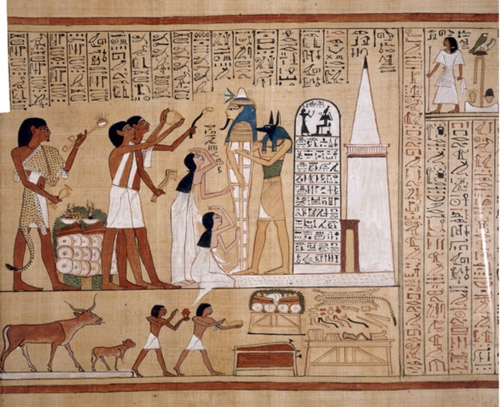
Book of the Dead of Hunefer, painted on papyrus, showing the coffin of the deceased (note it's color - it is so 19th Dynasty!) being supported by Anubis in front of Hunefer's tomb. Hunefer's wife and daughter are actively mourning him while three priests behind them are participating in rituals for the dead, including the opening of the mouth.
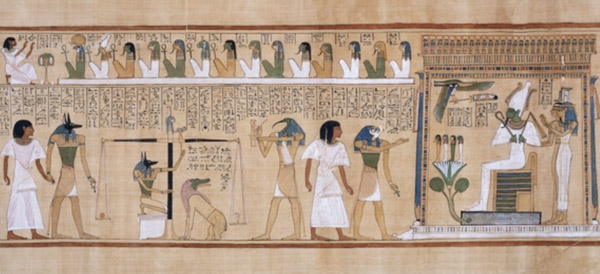
Hunefer gets his heart weighed and - isn't this surprising? - comes out on the right side. So no eating of the heart by crocodile-headed monsters, rather he gets presented to Osiris backed by Isis and Nepthys as one of the worthy dead.
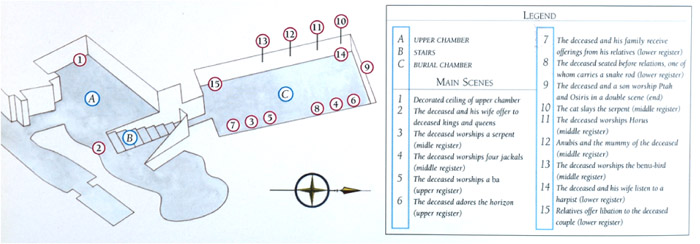
Plan of the tomb of Inherkhau at Deir el-Medina. Some of the things present in this tomb are common in the Ramesside period, including the division of most of the decoration into two registers, the bottom of which is more earthly and the upper of which is dedicated to the gods (see following imgaes). It is also basically a modified T-shaped plan - familiar from the 18th Dynasty and still very much present in the Ramesside period (in this case the burial chamber is combined with the longitudinal hall). However, Deir el-Medina is always something of a special case and the degree to which the 19th Dynasty tombs from the site have been read as typical of the period is somewhat troubling. Furthermore, much scholarship on differences between 18th and 19th Dynasty private tombs (including Robins) has been simplistic. Tread with caution! Talk about trends, not absolutes!
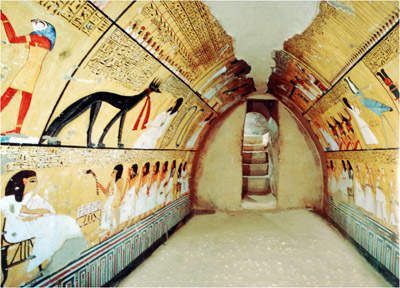
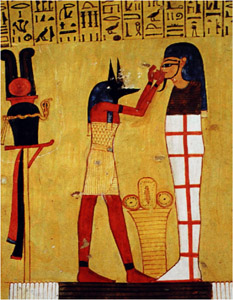
The burial chamber in the tomb of Inherkhau. General view (left); detail of Anubis and the mummy of the deceased (right).
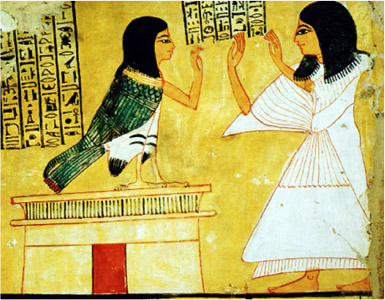
Inherkhau and his ba (atop his tomb).
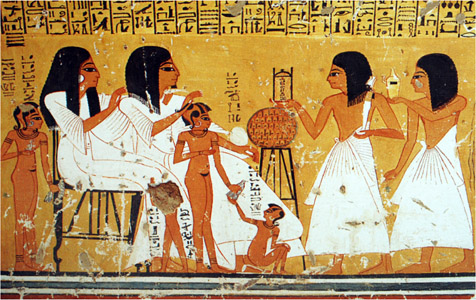
Inherkhau and his family receive offerings from relatives/funerary priests.
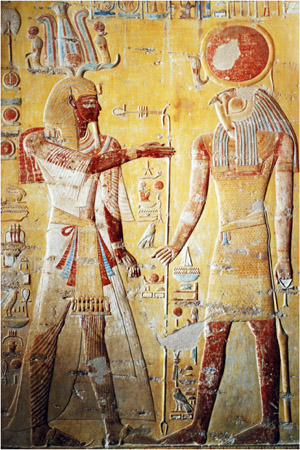
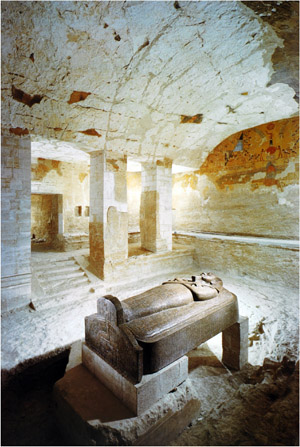
The tomb of Merenptah in the Valley of the Kings, 19th Dynasty. Merenptah in his spectacular linen garments hangs with Ra-Horakhty; the anthropoid sarcophagus of Merenptah in the sunken portion of his burial chamber.
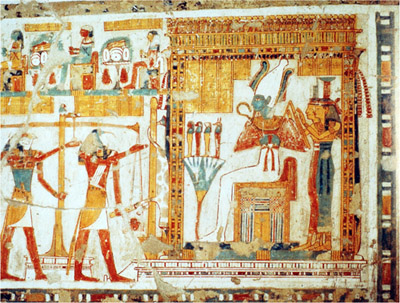
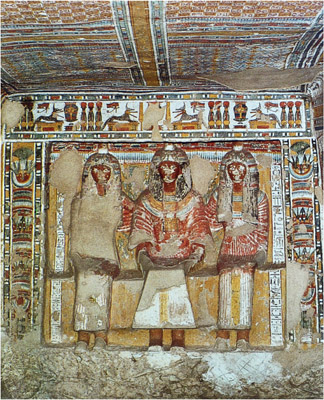
The (private) tomb of Neferenpet, 19th Dynasty, showing the weighing of the heart and an engaged statue of the deceased and family members
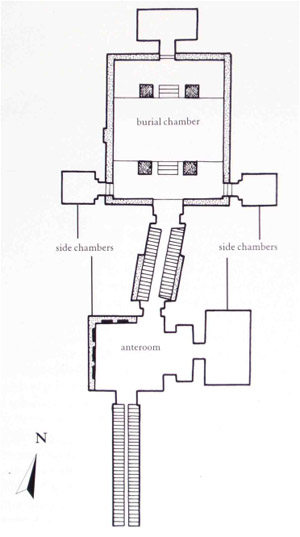
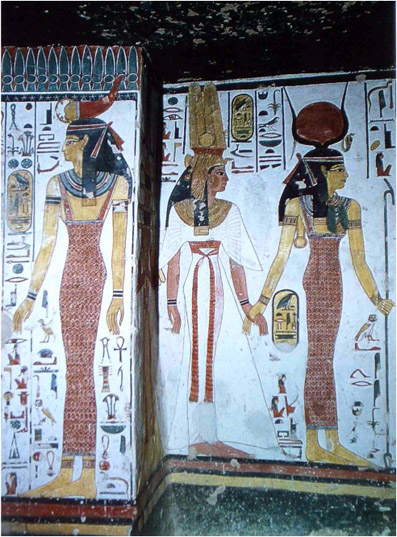
The tomb of Nefertari, Great Royal Wife of Ramesses II (one of 7, but the early principal wife). Plan and section of painting showing the queen with Selket and Hathor.
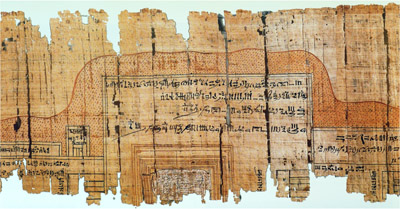
Plan of the tomb of Ramesses IV (this is one of exactly two "maps" we have of actual physical locations rendered in anything like a real plan from ancient Egypt - the other is a map of mines in the Eastern Desert). His anthropoid sarcophagus is indicated in his burial chamber.
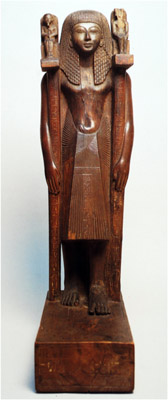
Private wooden sculpture of a man holding standards from the 19th Dynasty - this is related to a royal form of the time.
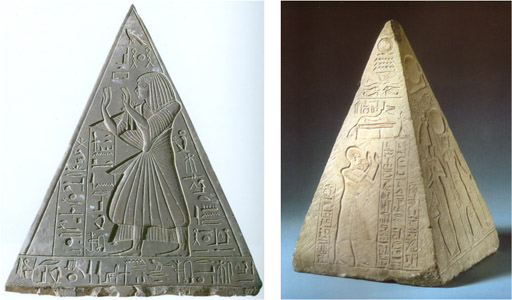
Pyramidions from the Ramesside period. These could top pyramids that served as the upper parts of private tombs in many cases at this time, but could also be dedicated by themselves as votives in temples. The upraised hands of the deceased show him venerating the sun god.
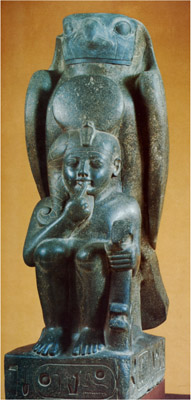
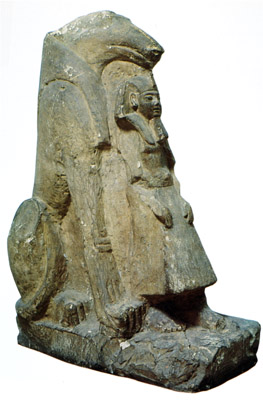
Statues of Ramesses II. Left, cryptographic statue spelling his name; right, the god Seth protecting the king.
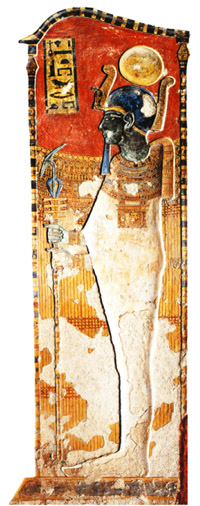
Ptah in a shrine from the tomb of Ramesses III in the Valley of the Kings.
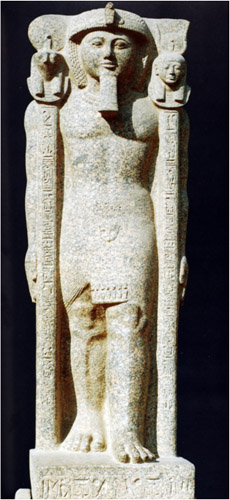
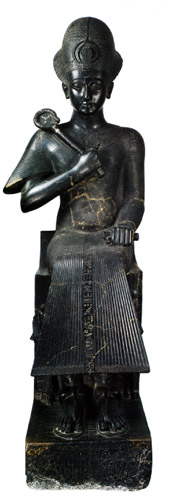
Ramesses II holding the standards of the gods of Armant (left) and from the "East Temple" at Karnak (right). What's he wearing? Why does that matter? Where is he looking? Why does that matter?
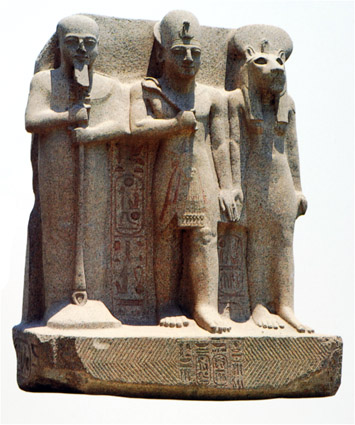
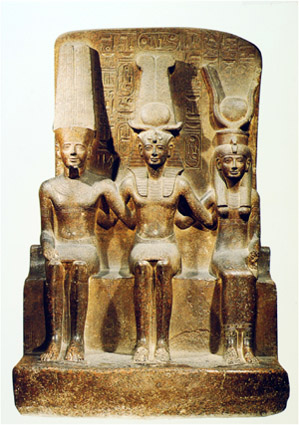
Ramesses II with Ptah and Sekhmet, standing in as a member of the Memphite triad (left) and with Amun and Mut in place of Khonsu (right)
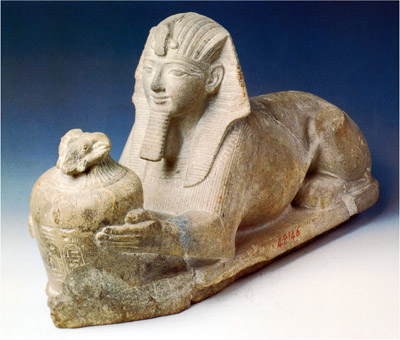
Ramesses II presenting offerings in the form of a sphinx, from the Karnak Cachette
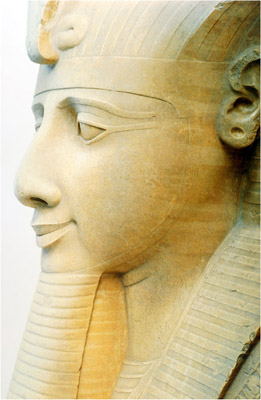
Ramesses II in a very fine statue (don't say all his sculpture sucks!) from Memphis. As is so much of his sculpture, this is absolutely massive.
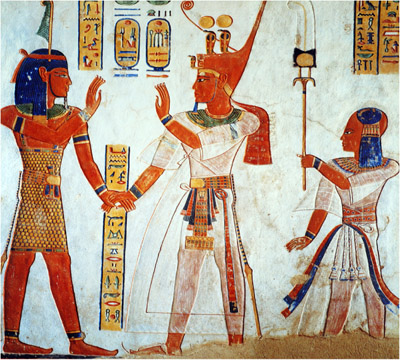
Ramesses III and his son Khaemwaset (named after the 4th son of Ramesses II - so confusing). From the tomb of Khaemwaset in the Valley of the Queens at Thebes.
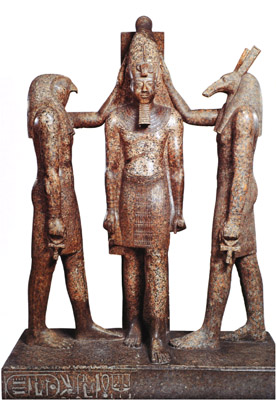
Ramesses III and Horus and Seth. Nevermind the large number of state gods at this period - check out the negative space in this sculpture! Have we ever seen a scene like this in the round before?
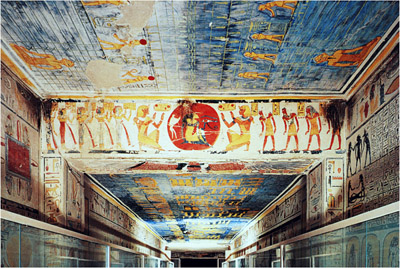
Ramesses IX tomb, including celestial and star clock ceiling
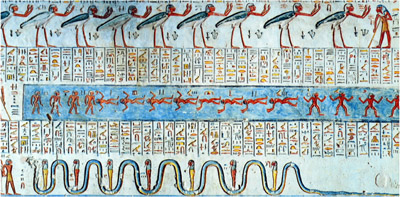
Ramesses VI tomb, scene showing the blessed dead, the drowned dead in limbo, and the cursed dead being spit on by a snake
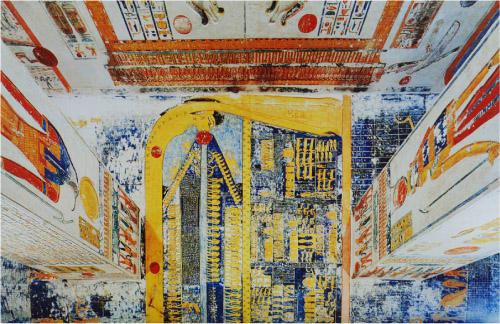
Ramesses VI tomb ceiling, the sky goddess Nut swallowing the sun in the evening
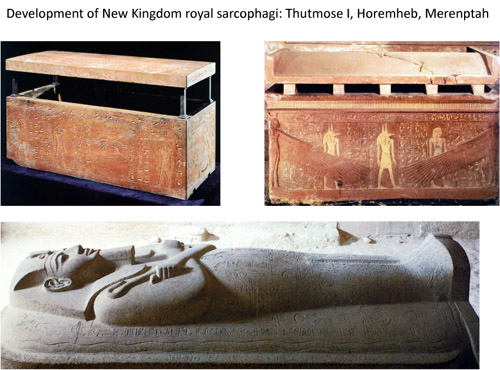

Scene from the tomb of Sennedjem at Deir el-Medina, 19th Dynasty
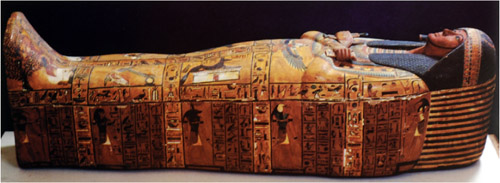
The coffin of Sennedjem, 19th Dynasty Deir el-Medina (check it out - not your 18th Dynasty black and gold standard).
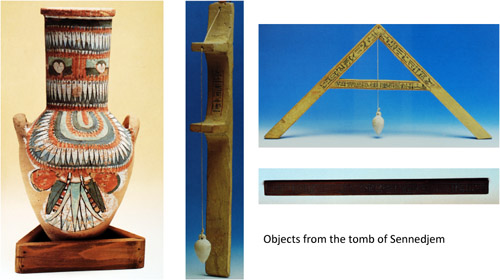
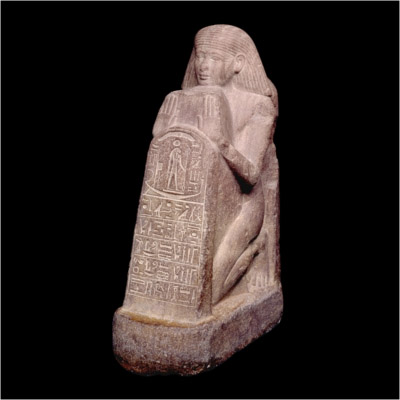
Private stelaphorus statue - these things are homages to the sun and can be placed either on tomb facades or in temples as private dedications (much like the scribal statues we made such a big deal of earlier).
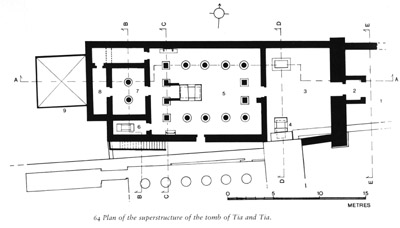
Plan of the tomb of Tia and Tia (sister and brother-in-law of Ramesses II) at Saqqara. Note the location (near Memphis!) and the layout, which so closely resembles a temple but with a pyramid smacked on the back.
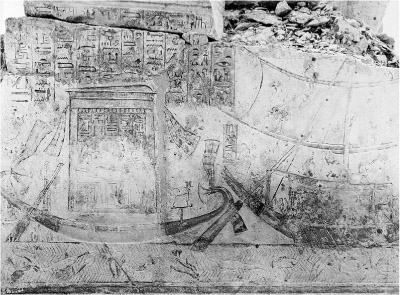
Relief from the tomb of Tia and Tia at Saqqara, showing the boat of the deceased couple being towed to Abydos.
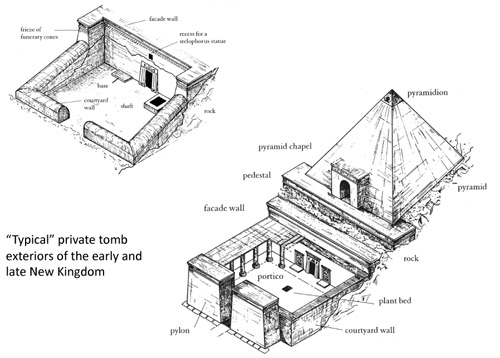
These illustrations DO work to illustrate general trends but do NOT demonstrate absolute rules. The complexity of the relationship between 18th Dynasty and later tomb is something we have approached in class, but also a topic that needs substantial work (if anyone is looking for a dissertation topic). Use these as guides to some important shifts rather than templates allowing you to predict what tombs of given periods will look like.
